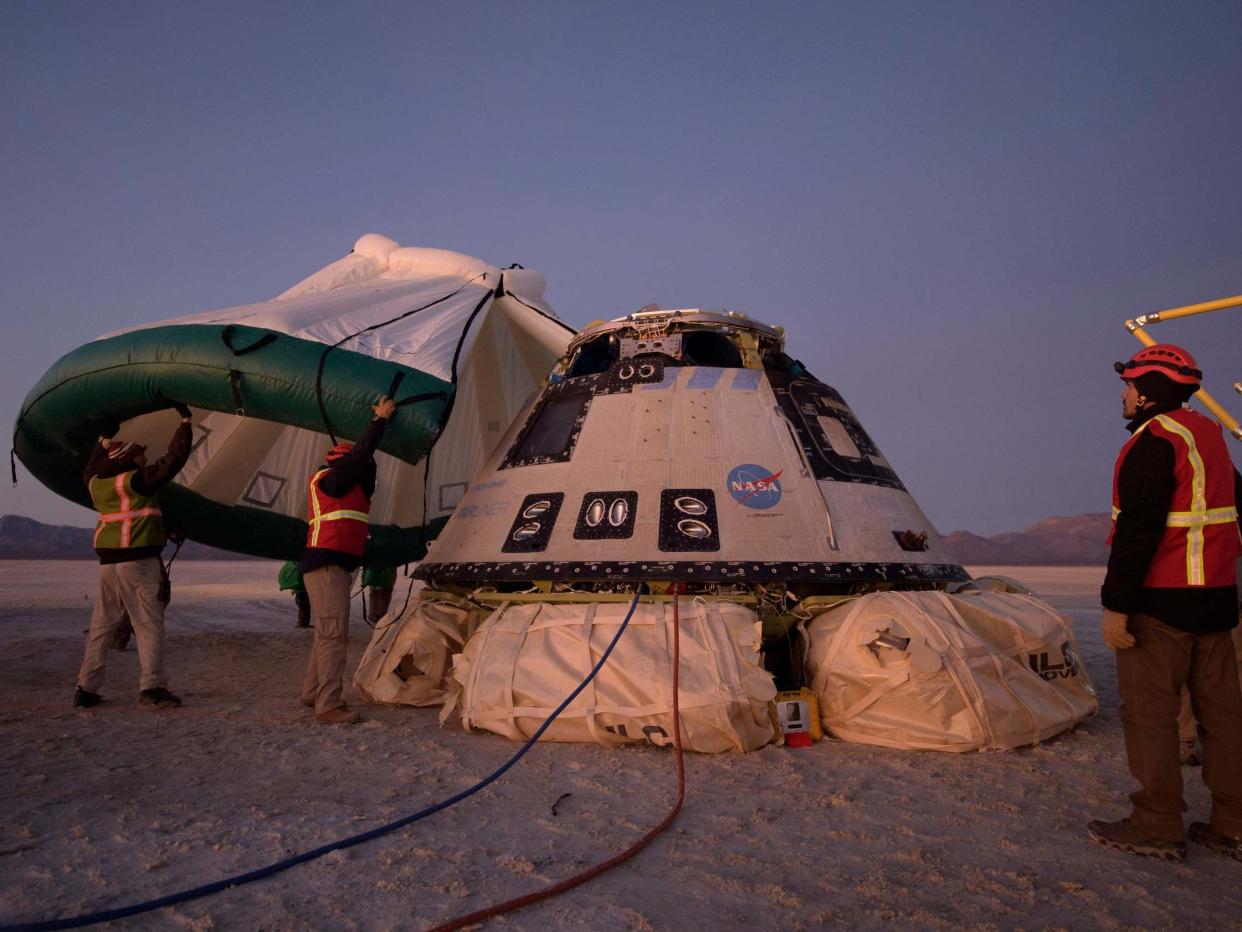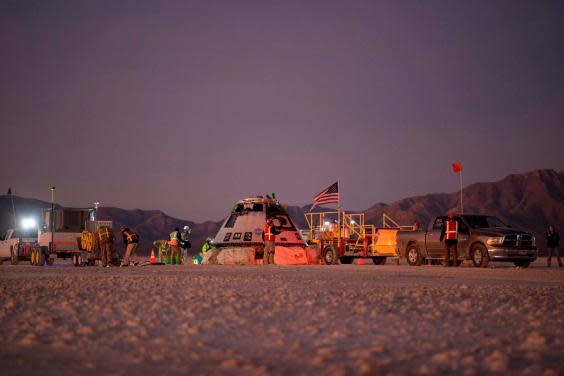Boeing Starliner spacecraft lands in US desert after botched mission

Boeing’s Starliner spacecraft has landed successfully in a US desert after aborting a botched mission.
The crewless astronaut capsule landed at the White Sands desert in New Mexico on Sunday after abandoning its milestone test mission.
A software problem on Friday meant it failed to reach the orbit needed to dock with the International Space Station two days earlier.
It came at the end of a year that has seen Boeing plagued with engineering issues afters its 737 Max jetliner was grounded following two fatal crashes.
Sunday's landing, which tested the capsule's difficult re-entry into the atmosphere and parachute deployment, will provide the mission's most valuable test data after it failed to meet one of its core objectives of docking to the space station.
Jim Chilton, senior vice president of Boeing’s space and launch division, told reporters: “It couldn't really have gone any better." He added experts would need weeks to analyse the data from this mission before determining if Boeing could continue with its plan to send a crewed mission on the craft in 2020.
Jim Bridenstine, head of Nasa, said: “We're going to get I think a lot more data than we would have gotten if the test had gone according to plan.”
After the Starliner capsule was launched from Florida on Friday, an automated timer error prevented it from attaining the right orbit to meet and dock with the space station.
Mr Chilton said the timer was running 11 hours ahead, which caused the spacecraft to burn fuel too quickly.

Boeing and Nasa officials said they still do not understand why software caused the craft to miss the orbit required.
After the Starliner spacecraft touched down, teams of engineers in trucks raced to inspect the vehicle, whose six airbags cushioned its impact on the desert surface as planned.
Mr Chilton said the spacecraft was in a good condition after landing, with little charring and stable air pressure and temperature in the cabin.
The landing marked the first time a US orbital space capsule designed for humans landed on land.
All previous American capsules, including SpaceX's Crew Dragon, splashed down in the ocean. Russia's Soyuz capsules and China's past crew capsules made land landings.
The CST-100 Starliner's debut launch to orbit was a milestone test for Boeing.
The company is vying with SpaceX, the privately-held rocket company of billionaire entrepreneur Elon Musk, to revive Nasa's human spaceflight capabilities.
SpaceX carried out a successful unmanned flight of its Crew Dragon capsule to the space station in March.
Additional reporting by Reuters
Read more
Trump launches new US space force
Boeing Starliner spacecraft 'healthy' and set to return to earth
Nasa abruptly cuts live stream after botched Starliner launch
Going up? How the idea of a ‘space elevator’ could become reality
